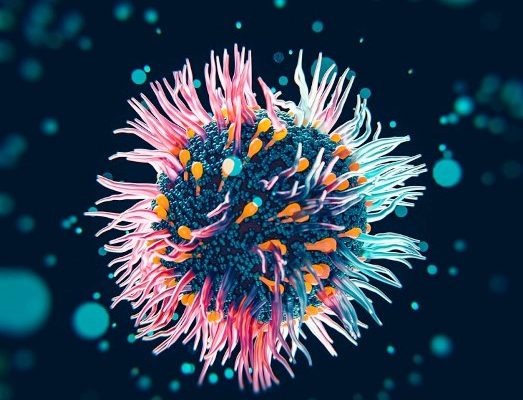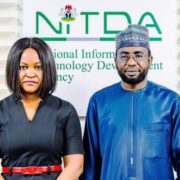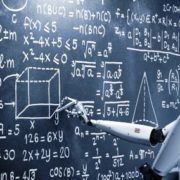By Deepak Chopra
Media coverage has already made the accomplishments of artificial intelligence border on the miraculous. Given the task of learning a foreign language, for example, AI has been known to learn another language it wasn’t tasked with. Faced with the complex problem of mapping proteins in three dimensions, which can take a human researcher several years, AI has mapped every known protein, all 200 million of them.
RELATED: AI has to get only one thing right
What isn’t generally known, however, is that to accomplish these things and many more, AI uses only a few basic processes of the human brain, namely information gathering memory, and repetitive learning. AI is self-learning, which is why it can be taught the rudiments of chess, for example, and in short order invent a novel strategy never discovered before.
Yet if you look beyond the basic brain processes being employed so far, there are three thresholds that present cosmic challenges, and if AI can cross these thresholds, it will be able to explore, and perhaps solve, mysteries that have defied human intelligence.
What isn’t generally known, however, is that to accomplish these things and many more, AI uses only a few basic processes of the human brain, namely information gathering memory, and repetitive learning. AI is self-learning, which is why it can be taught the rudiments of chess, for example, and in short order invent a novel strategy never discovered before.
Yet if you look beyond the basic brain processes being employed so far, there are three thresholds that present cosmic challenges, and if AI can cross these thresholds, it will be able to explore, and perhaps solve, mysteries that have defied human intelligence.
The first threshold is creativity, a quality some people possess in abundance but which cannot, so far at least, be taught. How and why did creativity emerge as the most important aspect that makes art, science, technology, and civilization possible? Is it a cosmic trait? If creativity is innate in the cosmos, this would defy the standard scientific model that explains all of creation through random events operating along the known laws of physics and chemistry.
AI has already been creative in a limited sense. Using that new chess strategy as a prime example, AI relies on super-computers to do number crunching on an unprecedented scale, and by testing millions, billions, or even trillions of possible combinations, AI can create something new. But this is very different from inspired creativity of the kind that produces Shakespeare’s plays, Rembrandt’s paintings, and Mozart’s symphonies. A genius doesn’t test millions of possibilities. Inspiration leads to the final product with minimal revisions. To cross this threshold, AI will have to reach much deeper into the nature of the mind, and that involves departing from the assumption that complicated brain processing holds the answer.
The second threshold is sentience or the trait of being conscious. A computer programmed to say “I am happy” isn’t the same as a computer that actually has the experience of happiness. Sentience has many aspects (thinking, feeling, understanding, remembering, etc.), but experience is always at the core. To date, despite a few fringe claims that were later disproved, no machine has ever had an experience. The famous Turing test measured sentience simply through imitation. If a computer is asked questions, and you cannot tell by its answers that they were not produced by a human being, then the machine has passed the Turing test.
But the cleverest imitation of a human being isn’t the same as being human. Sentience requires an inner, subjective world, and one important quality of human subjectivity is irrational. We doubt, get confused, run into dead ends, get frustrated, give in to fear, grow depressed, adopt prejudices, act against our best interests, hold grudges, show loyalty and betrayal, and many other things that “perfect” sentience would never be guilty of. Yet from this amalgam of memory, unconscious drives, atavistic impulses, conditioning, and social pressure, the panorama of human achievement emerged. No computer would build the Pyramids, a magnificently irrational thing to do. No computer would invent music if it didn’t already exist, because computers don’t know what pleasure actually is, and music is for pleasure.
But let’s accept the possibility that future AI can cross the thresholds of creativity and sentience. Perhaps a genuine quantum computer will offer answers to these two mysteries beyond our comprehension to disprove. In that case, the AI answer would have to be accepted.
But this leaves the third threshold, which is transcendence. Transcendence is the ability to go beyond the boundaries of physical reality. Religion, mythology the products of the imagination, and spiritual experiences of every kind are transcendent, since they have no physical explanation. It is conceivable that a super-computer can invent new religions and produce imaginative novels—those achievements seem to be on the verge of occurring already.
But this doesn’t touch the essence of transcendence, which is to offer qualities of life that were never invented in the first place. They derive from some level of consciousness that is independent of the mental activity that produces thoughts. At a deeper level human beings go beyond mental activity and discover love, compassion, empathy, insight, curiosity, inner growth, and spiritual aspirations. No culture has been bereft of these qualities since prehistory, and yet no culture ever claimed to invent them. They are like gifts of human awareness that transcend the ability of human beings to explain why they exist and more importantly, why we value them so highly.
What all three thresholds—creativity, sentience, and transcendence—have in common is that you cannot cross them through mechanical means. No amount of data crunching produces the love of a mother for her child or the drive that makes geniuses create endlessly fascinating works of art and music. In fact, even the most basic standards of experience (“This hurts, that feels nice,” “I like A, but I hate B,” “I really don’t care,” “It just isn’t me,” “I’m not satisfied,” “How fascinating,” etc.) are far beyond AI as it is currently approached.
What we’re talking about is the inexplicable world of consciousness. As conscious beings, we are using AI as a simulation of what conscious beings do, such as solving technological problems, gathering data, analyzing that data, and reaching rational conclusions faster and better than ever. But none of these tasks make you conscious. Not to mention the infinite reach of consciousness in domains that have nothing to do with data.
The ultimate challenge will be to use AI in the service of higher consciousness, a prospect that is more thrilling than any proposed so far.
Author: DEEPAK CHOPRA MD, FACP, FRCP, founder of The Chopra Foundation, a non-profit entity for research on well-being and humanitarianism, and Chopra Global, a whole health company at the intersection of science and spirituality, is a world-renowned pioneer in integrative medicine and personal transformation. Chopra is a Clinical Professor of Family Medicine and Public Health at the University of California, San Diego and serves as a senior scientist with Gallup Organization. He is the author of over 90 books translated into over forty-three languages, including numerous New York Times bestsellers. His 91st book, Total Meditation: Practices in Living the Awakened Life explores and reinterprets the physical, mental, emotional, relational, and spiritual benefits that the practice of meditation can bring. For the last thirty years, Chopra has been at the forefront of the meditation revolution. His latest book, Living in the Light co-authored with Sarah Platt-Finger. TIME magazine has described Dr. Chopra as “one of the top 100 heroes and icons of the century.” www.deepakchopra.com































